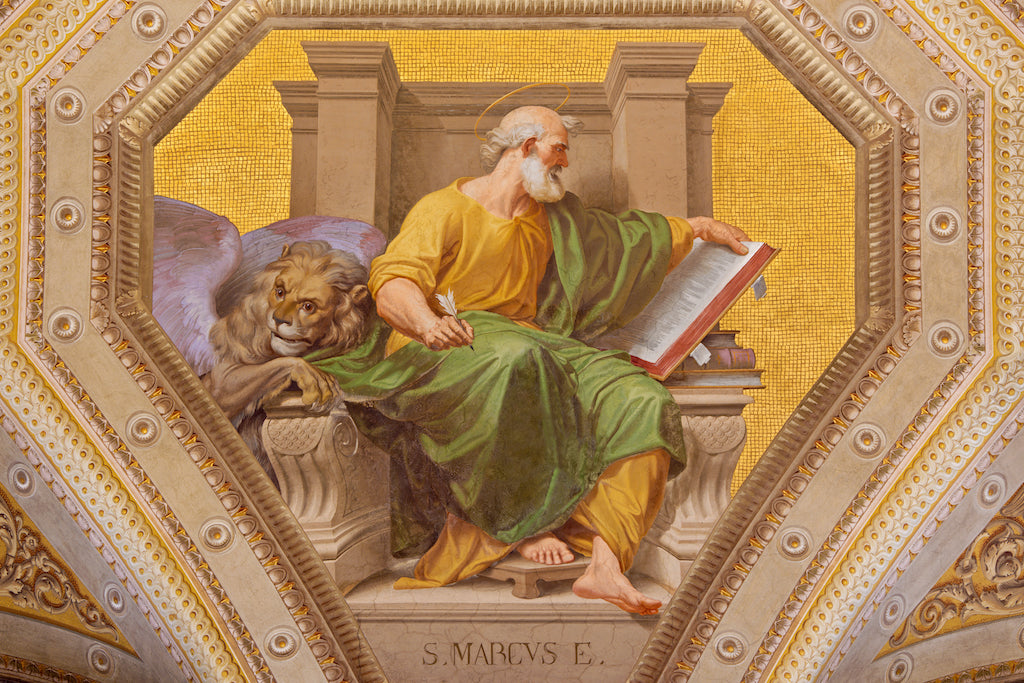
By Anne Metz
As a 2nd grade CCD catechist, I spend a lot of time talking about and preparing children for their First Reconciliation. Over the years, I’ve come up with a few key points and object lessons that really get to the heart of this beautiful Sacrament but are still understandable and relatable to young children.
Sin or Mistake?
Before you start really preparing for the actual sacrament, make sure your child knows the difference between a sin or a mistake. The main thing to point out here is intention. For example, I ran into someone on the playground, and they fell down. What was my intention? Did I push them on purpose? Or did I bump into them by accident?
OBJECT LESSON:
A great way to learn this is to play a game! Grab a few index cards and write down a sin or a mistake on each card. Then, ask your child to read the card and decide if it’s a sin or a mistake. Have her hop up a stair each time they get one right and then find a reward like a sticker or a piece of candy at the top of the stairs.
Learn about Forgiveness
When we sin, it makes us feel bad inside.
Help your child tune into this feeling. Ask your child to close his eyes and think about a specific time he made a bad choice. Asking for and receiving God’s forgiveness helps to remove this feeling!
OBJECT LESSON:
Try this simple lesson at home - all you’ll need is a piece of paper, a helium balloon, some sin cards from the previous activity, and some small clothespins or paper clips.
Write the word God on the piece of paper and hang it on the wall as close to the ceiling as possible. Draw a face on the helium balloon and let your child name it.
Let’s call him Bob for now. Bob is floating high, feeling light, and he is very close to God. Then he commits a sin (clip a sin onto his string) and it weighs him down a little. Keep adding sins until he drops to the ground. Then, have Bob go to Reconciliation. When the priest forgives Bob’s sins, your child can remove the sin cards. Bob’s sins are forgiven and he feels much lighter. He will float up and be close to God again.
God Loves Us All the Time
When teaching about Reconciliation and forgiveness, the students in my 2nd grade CCD class often feel like they are “bad” when they sin and “good” when they make good choices. This often leads to them feeling like God will like them more when they do “good” things and like them less when they are “bad.”
Make sure to tell your child God loves us all the time! There is nothing we can do to make God love us any less! He does want us to come to Him and ask forgiveness when we make bad choices, but that doesn’t mean He loves us. Ask your child, “Do you still love the doll, even though you put her in time out?” Explain how this is similar to how God loves us. He loves us no matter what; but he does want us to make good choices, to be kind to others, and to say sorry when we mess up.
Practice the Steps
Once you’re sure your child understands what a sin is, what forgiveness is, and that God loves us all the time, it’s time to get practical. Take time to go over the steps of Reconciliation with your child. Watch a video that explains the steps, and practice by role playing with dolls or stuffed animals. The more prepared your child is, the more comfortable they will feel on the day.
What if I forget?
Even with preparation, and especially when you add in nerves and excitement, your child may forget the steps of Reconciliation. Or they may worry that they’ll forget. Make sure your child knows what to say in case they don’t know what to say! That can be as simple as, “Father, I can’t remember what I’m supposed to say next.” Assure your child that the priest will help them, and they won’t be the first child to have forgotten.
Celebrate First Reconciliation
Your child’s First Reconciliation is a big day! Make sure they know that by having a little celebration afterwards. A simple trip to the ice cream shop on the way home, or a cupcake in the kitchen will show your child that what occurred today was very special indeed.
When she’s not writing about faith, Anne Metz works for Growing Catholics, whose mission is to bring Scripture to all, especially tweens and teens.




